Hiroshi Sugimoto
Hiroshi Sugimoto, born 23 February 1948, is a Japanese photographer and architect. He leads the Tokyo-based architectural firm New Material Research Laboratory. Hiroshi Sugimoto was born and raised in Tokyo, Japan. He reportedly took his earliest photographs in high school, photographing film footage of Audrey Hepburn as it played in a movie theatre. In 1970, Sugimoto studied politics and sociology at Rikkyō University in Tokyo. In 1974, he retrained as an artist and received his BFA in Fine Arts at the Art Center College of Design, Pasadena, California. Afterwards, Sugimoto settled in New York City. He soon started working as a dealer of Japanese antiquities in Soho. Sugimoto has spoken of his work as an expression of ‘time exposed’,[4] or photographs serving as a time capsule for a series of events in time. His work also focuses on the transience of life and the conflict between life and death.
Sugimoto is also deeply influenced by the writings and works of Marcel Duchamp, as well as the Dadaist and Surrealist movements as a whole. He has also expressed a great deal of interest in late 20th century modern architecture.
His use of an 8×10 large-format camera and extremely long exposures has garnered Sugimoto a reputation as a photographer of the highest technical ability. He is equally acclaimed for the conceptual and philosophical aspects of his work.
In 1980 he began working on an ongoing series of photographs of the sea and its horizon, Seascapes, in locations all over the world, using an old-fashioned large-format camera to make exposures of varying duration (up to three hours) The locations range from the English Channel and the Cliffs of Moher to the Arctic Ocean, from Positano, Italy, to the Tasman Sea and from the Norwegian Sea at Vesterålen to the Black Sea at Ozuluce in Turkey. The black-and-white pictures are all exactly the same size, bifurcated exactly in half by the horizon line. The systematic nature of Sugimoto's project recalls the work Sunrise and Sunset at Praiano by Sol LeWitt, in which he photographed sunrises and sunsets over the Tyrrhenian Sea off Praiano, Italy, on the Amalfi Coast.
https://en.wikipedia.org/wiki/Hiroshi_Sugimoto
Seascapes
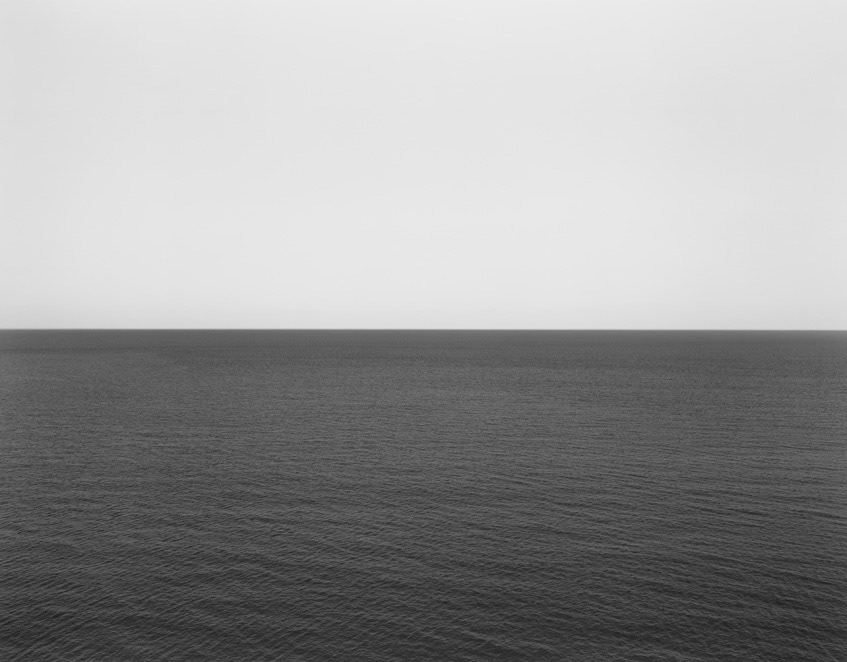
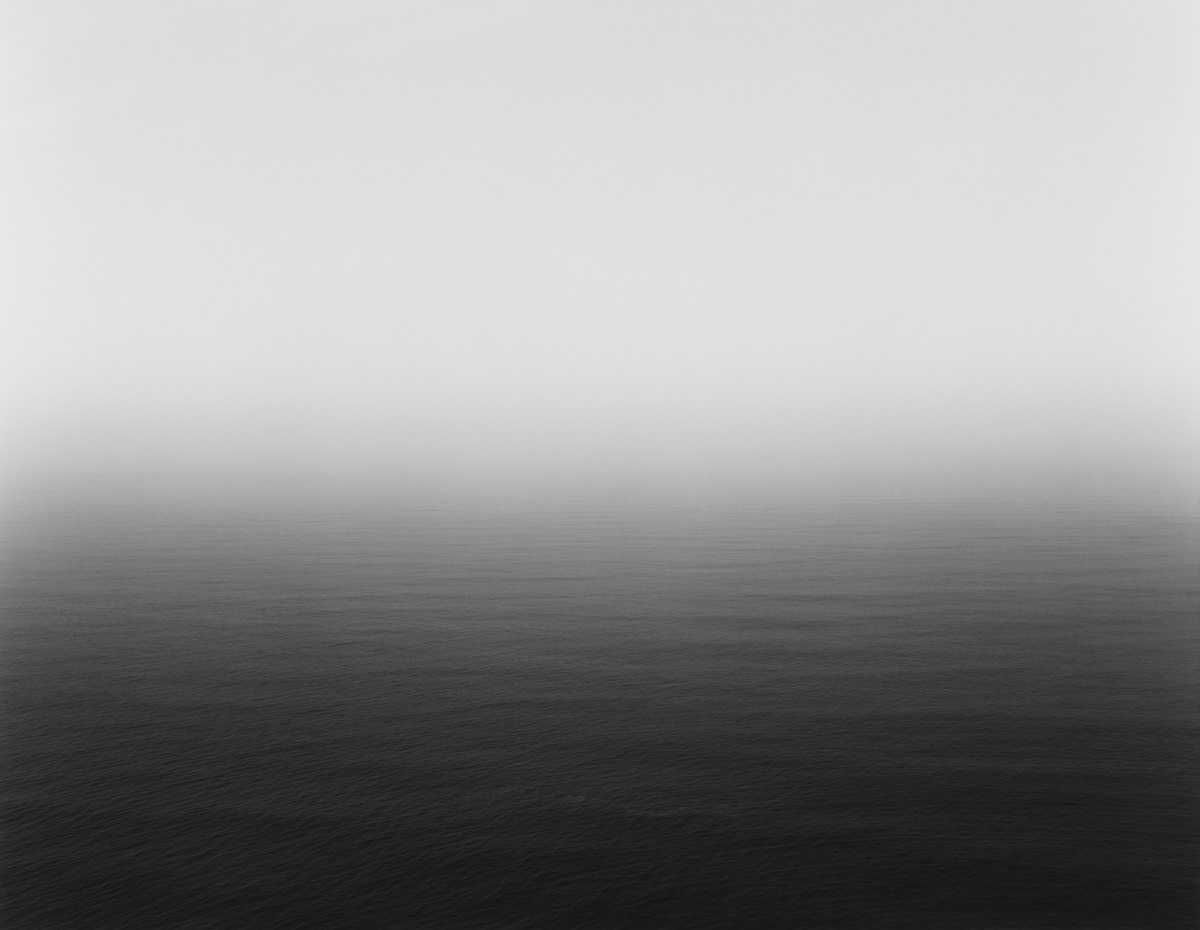
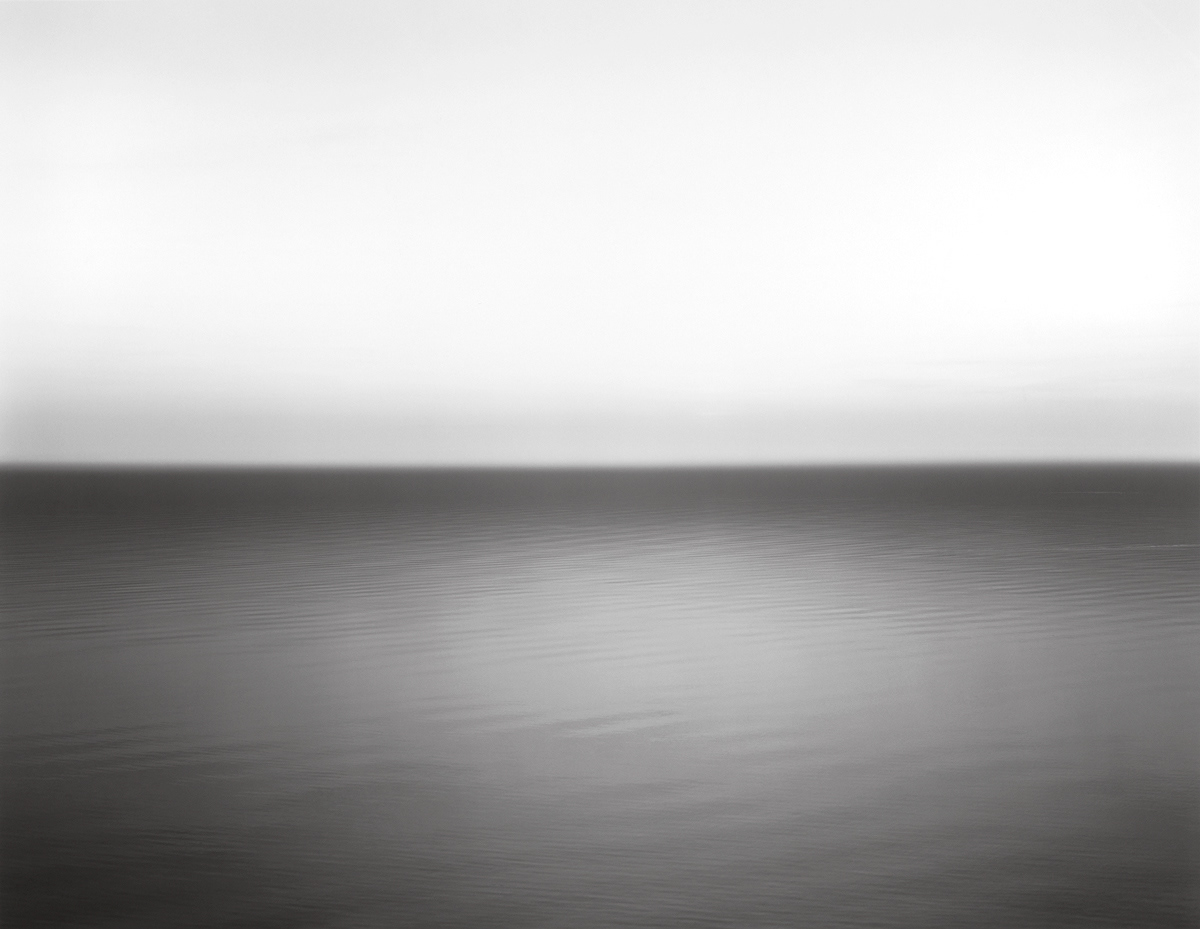
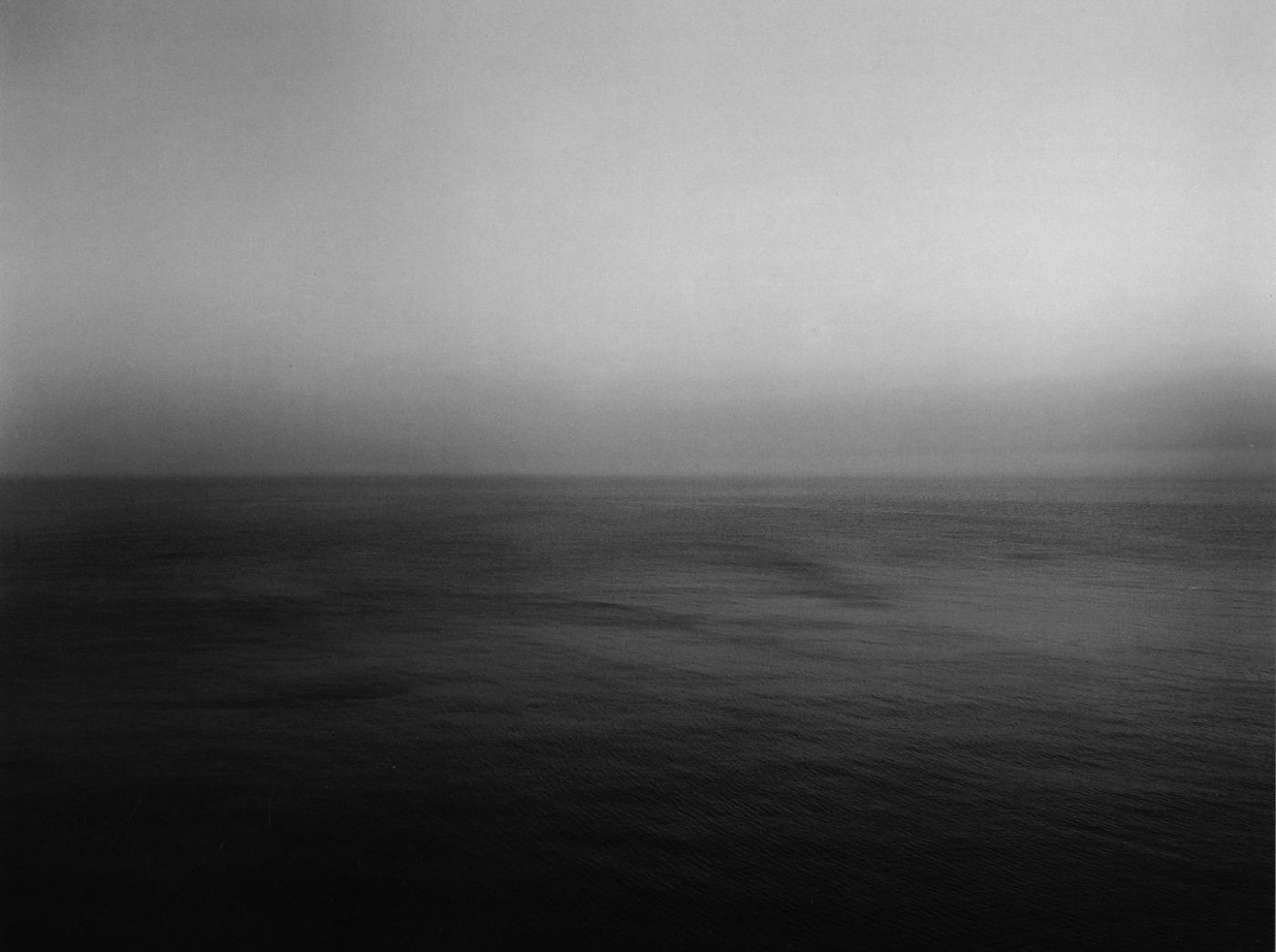
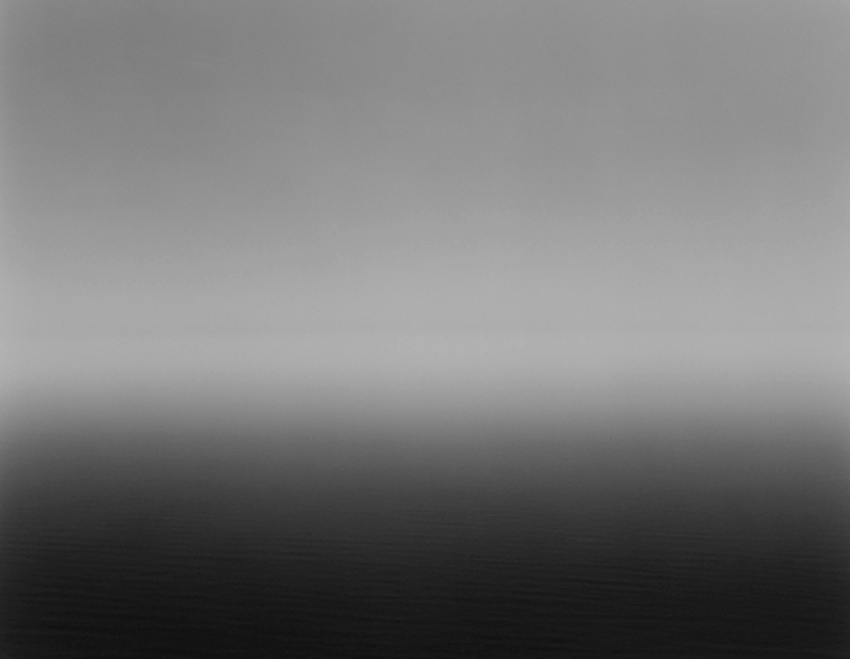
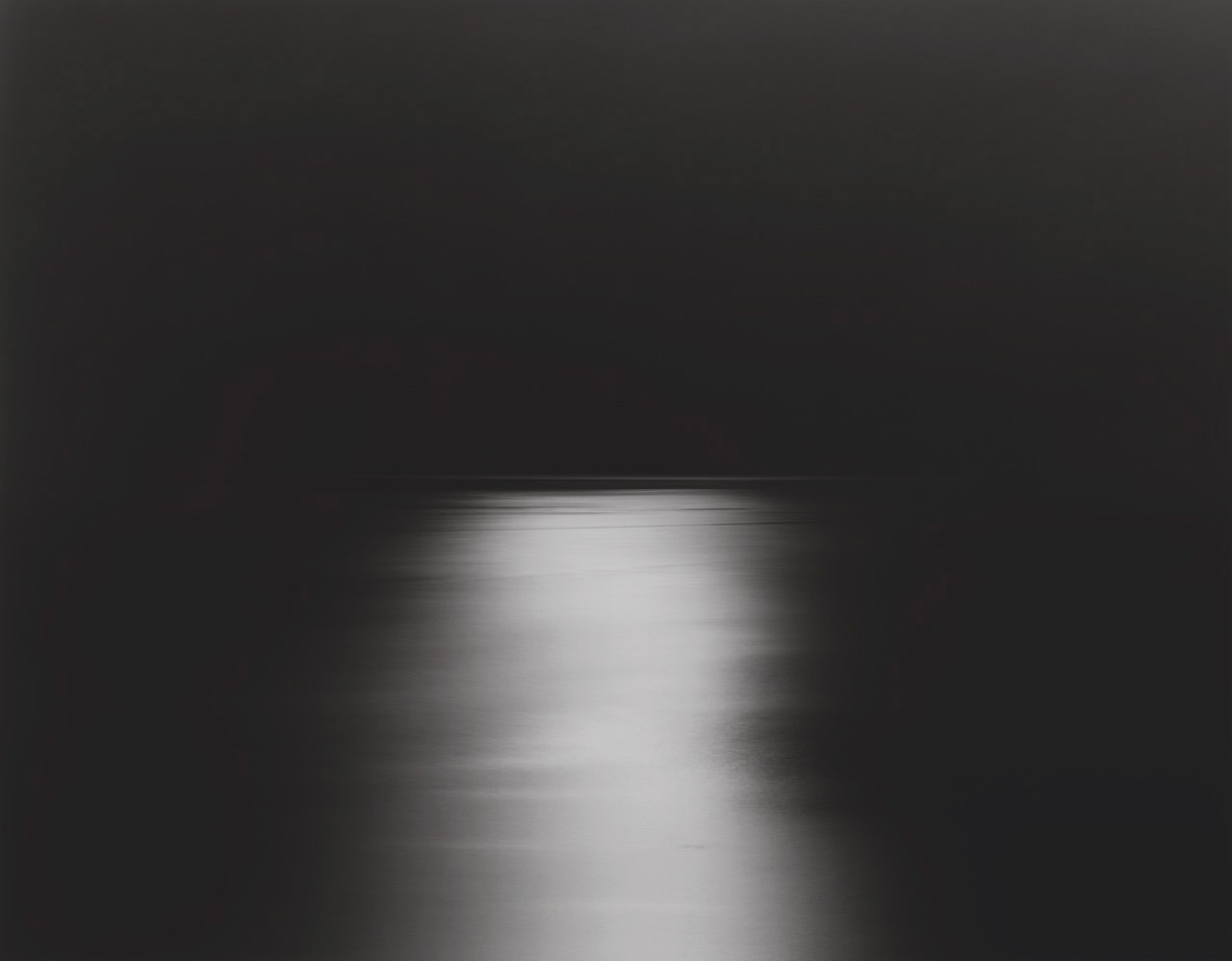
"Water and air. So very commonplace are these substances, they hardly attract attention―and yet they vouchsafe our very existence. The beginnings of life are shrouded in myth: Let there water and air. Living phenomena spontaneously generated from water and air in the presence of light, though that could just as easily suggest random coincidence as a Deity. Let's just say that there happened to be a planet with water and air in our solar system, and moreover at precisely the right distance from the sun for the temperatures required to coax forth life. While hardly inconceivable that at least one such planet should exist in the vast reaches of universe, we search in vain for another similar example. Mystery of mysteries, water and air are right there before us in the sea. Every time I view the sea, I feel a calming sense of security, as if visiting my ancestral home; I embark on a voyage of seeing."
- Hiroshi Sugimoto
Sugimoto’s series of work “Seascapes” has beautiful continuity with the horizon line always being in the same place. This is always making me think about what is further than that line. These images could be shot from exactly the same place, however, they are not. It reminds me of the analogy that you are always looking at the same moon wherever you are in the world, this connects people, much like the sea. I feel a sense of peace when I look at Sugimoto’s photographs. The black and white images are incredibly still and silent. They capture moments where Sugimonto has connects with the landscape he is in, I think this transpires through the viewer’s eye when they are looking at the seascapes.
I want to create this same feeling in my images where the viewer can connect with the same peace that I experience when I am making my photographs. To connect them to a spiritual level of inner peace and contentment. The images being black and white, simplify the frame, making the images look more still and peaceful. This is something that I am going to experiment with my images going forward.
How my Seascapes have been inspired
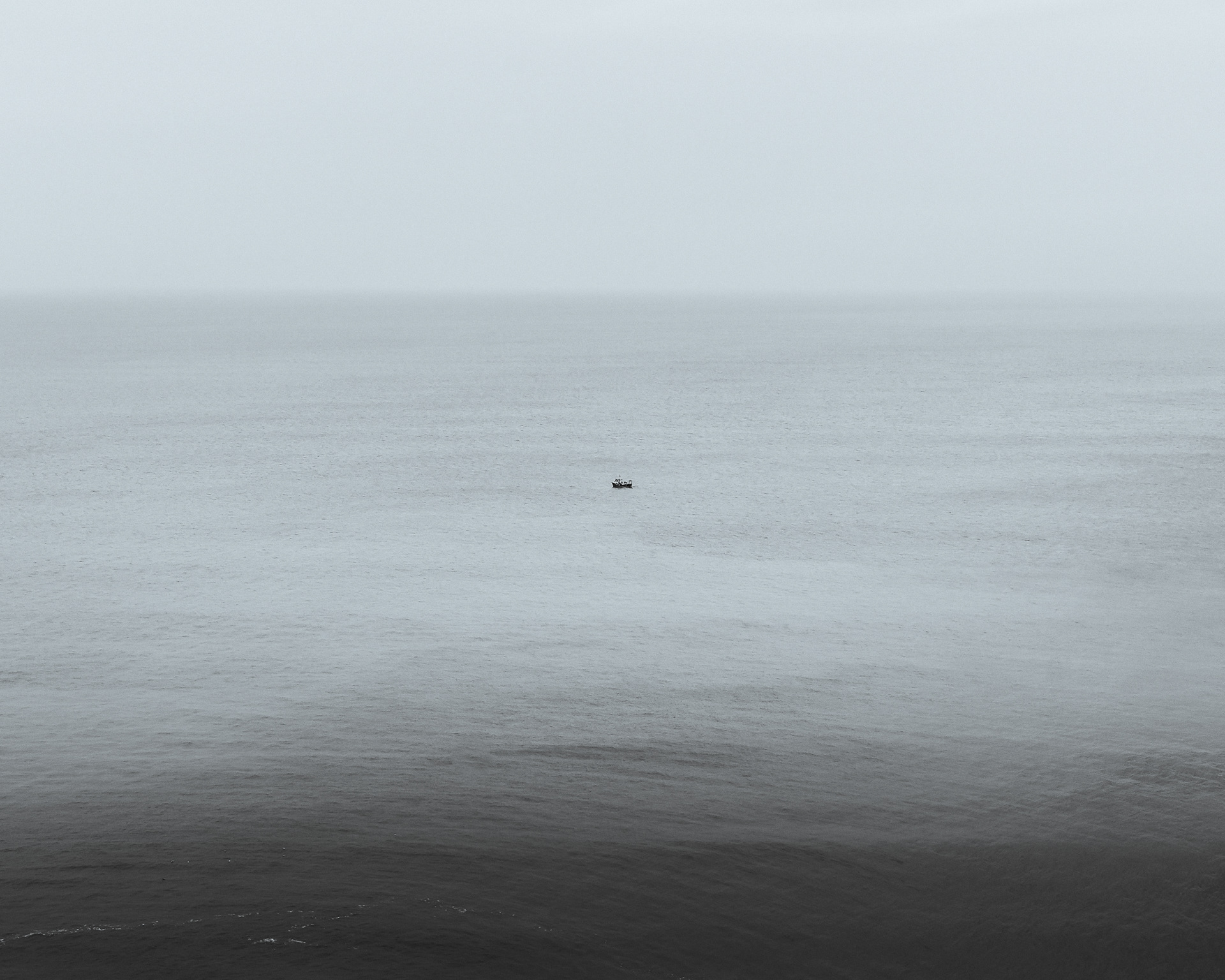


After thinking about how I wanted to output my photographs I decided that I was going to continue this project using black and white photography. Sugimoto’s seascapes connect with me on a simple yet complex level. The long exposures slow down the photographs and the surreal images of the sea create a sense of peace. The viewer does not know the state that the sea was in when it was photographed. It is one of the most powerful and unpredictable elements on our planet. We cannot feel the wind and salt air on our faces like Sugimoto would have felt when standing behind his 8x10 camera. Yet he gives us the stillest and most peaceful photographs of an element which has capabilities way beyond human control. This has inspired me to photograph the sea and connect with what it means to me. It is a place where I spend a lot of time to clear my head and escape from the world. The sea for me has a power that is beyond me. A feeling that there is always something else out there beyond the horizon line, a sense of freedom that allows me to escape into my imagination and into a silent state of mind.
These are photographs that I took on a recent trip down to Watergate bay after being inspired by the work of Sugimoto. I wanted to capture the horizon line in the center of my photographs where the viewer is able to connect with the water and the sky. I did not have a tripod with me so I was unable to capture any long exposures, this is something that I could most definitely develop in the future as it would slow down my photographic making even more. However, I feel like I have been able to capture a moment of stillness that takes you out of the moment you are in and connects you with the silence I was feeling when pressing the shutter button. I think that this feeling comes from the stillness in the sky. It was a fairly overcast day which kept most of the light behind the clouds which left a calmness reflection over the sea.
These images compared to Sugimoto’s reflect the stillness of the moment though I do not think I have captured the silence which I feel in his photographs. The slowness of Sugimoto’s images takes me to a much calmer and silent place in my mind. The two-toned smooth photographs expose me to the sublime as it captures something that the human eye cannot see in real-time. This notion of stillness creates the kind of silence that I would like to recreate in my work, imagery that takes the viewer out of the ordinary and prompts them into a mindset of meditation.